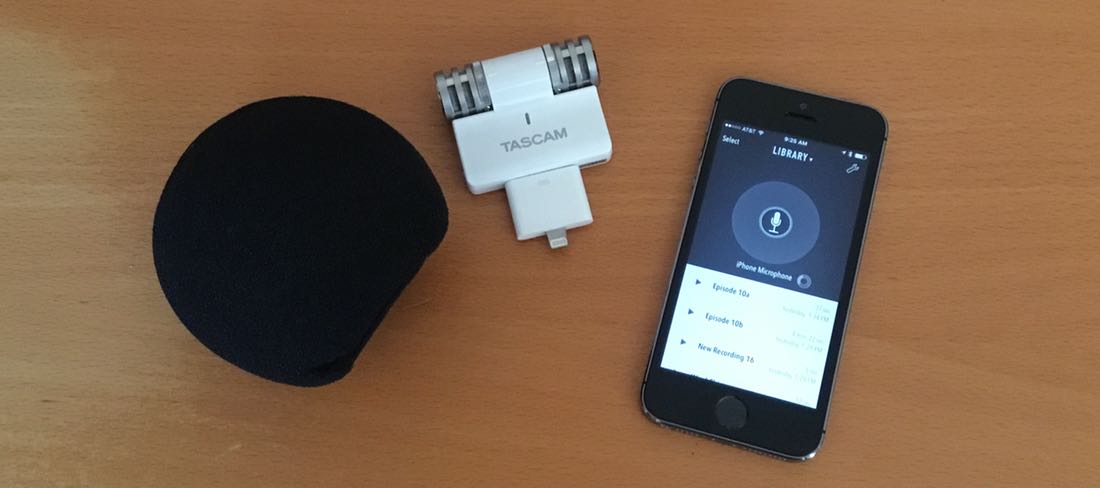A few weeks ago I started a new short-form podcast called Timetable. Each episode is 3-5 minutes. It has been really fun to record the show because I can try new things without investing too much time.
One goal from the very beginning was to record from iOS so that I could easily record outside the house. I wanted not just the flexibility to be away from my computer, but a stereo microphone that could capture some of the surrounding environment, to give it a more informal feel. (I’m actually cheating in some cases and using multiple tracks, to make editing easier, but I think the effect works. All the episodes have been exported to mono so far, though.)
I ordered this cheap iPhone microphone for testing — only $10 when I ordered it! — and figured after some experiments with my iPhone 4S, I would invest in something new. I liked it enough that I’m still using the mic with my 5S via a Lightning cable adapter. I’m also using a foam pop filter that I already had from a previous old mic.

This may be the single best value in a tech gadget I’ve ever purchased. Total cost for producing the podcast:
- Microphone: $10
- Ferrite: $20
- Workflow: $3 (for MP3 conversion)
- Domain name: $120 (.fm domains are expensive)
I certainly didn’t invent the idea of a “microcast”. There are other good short podcasts, such as Bite Size Tech. But I’m happy to see even more people trying out the idea. Michael even started a new podcast called Driftwood to chronicle the development of his Jekyll template for microcasts.
Ferrite also continues to impress. It’s a very high quality iOS app and is competitive with Mac multi-track audio editors. For a good introduction, check out Jason Snell’s review.